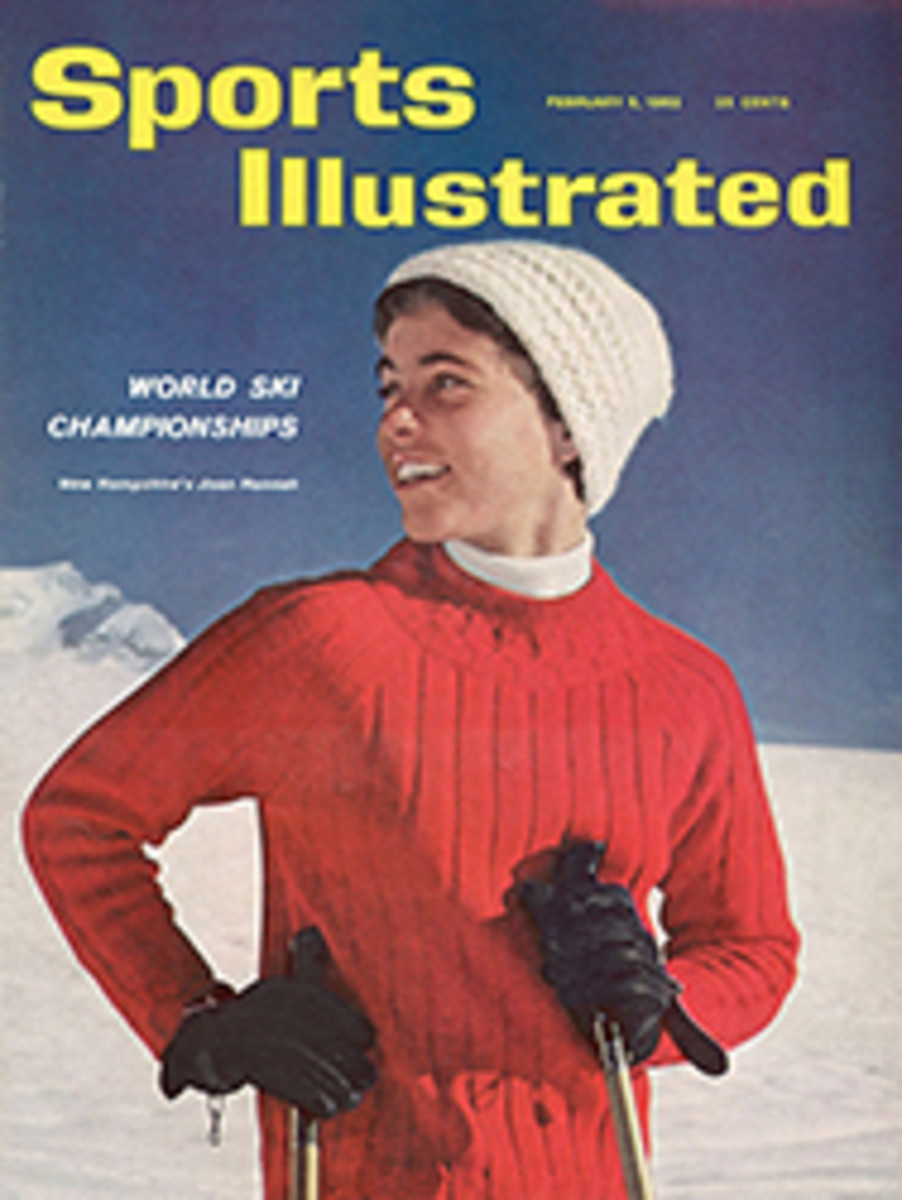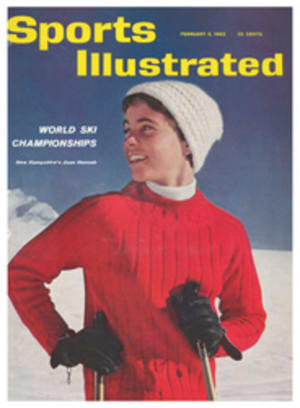
A 'novice miler' runs the fastest mile ever
Wanganui is a town of about 30,000 people, located 95 miles north of Wellington, New Zealand. Last week some 20,000 of its inhabitants repaired to a stadium known as Cook's Gardens to watch Peter Snell, the Olympic half-mile champion, have a go at the mile. Snell had run one mile earlier in the New Zealand summer, in a place called Timaru. His time then was 4:01.2, and he seemed to be dawdling. Now on a grass track burned hard and fast by the hot, dry New Zealand summer, he was going to attempt New Zealand's first sub-four-minute mile. In the field with him were Murray Halberg, the Olympic 5,000 meter champion; Bruce Tulloh of Britain; Albert Thomas, one of Australia's best distance runners; an American half-miler, Ernie Cunliffe; and two little-known New Zealanders, Barry Cossar and Alex Shaw.
Cossar, a good 880 runner, assumed the role of pacemaker in the first lap. Snell was content to run last for the first quarter, which Cossar turned in 59 seconds. At the beginning of the second lap Snell, running easily, began moving through the field until he was third behind Cossar and Halberg. Just before the half mile, Snell drove by Halberg and Cossar to take the lead. His time for the half was 1:59, placing him in certain reach of his goal.
Through the third lap Snell led Halberg by two yards; the Englishman, Tulloh, passed Halberg during this lap and was directly on Snell's heels as they began the final quarter mile. The time for three laps was 2:58, a pace which, as it turned out, killed off the rest of the field.
Tulloh, a small, busy runner, sprinted by Snell as they went into the last lap, but Snell lengthened his stride and regained the lead with about 340 yards to go. Then he launched an amazing, long sprint, which sent the crowd into a frenzy. At the tape Snell was some 25 yards ahead of Tulloh, with the Australian, Thomas, 30 yards behind Tulloh and Halberg another 20 yards back of him. Snell's time for the last lap was a fantastic 56.4 seconds, a truly astounding exhibition of stamina, coming as it did in the wake of the fierce pace he had set for the first three laps. His time for the mile was 3:54.4, breaking the world record set by Herb Elliott in Dublin, Ireland by a tenth of a second. Snell did not appear to be laboring when he finished; indeed, minutes later, when he was interviewed on a radio broadcast, his breathing was serenely even and he seemed more relaxed than the announcer.
Snell, like Halberg, trains under Arthur Lydiard, who may now be rated as the best distance coach in the world. Said Lydiard after the race: "Snell's time was logical the way he's been shaping. But it's just as logical to expect him to do better. After all, he's just a novice miler. We don't want to tackle too many miles this year, although there's bound to be a lot of pressure on him to carry on with mile runs. There's lots of time yet to cut some more off that time. And don't forget there's another miler, Dyrol Burleson, who's liable to go just as fast."
Peter Snell is a small-town boy from Opunake in coastal dairy country. He went to school at Te Aroha and at the Mount Albert Grammar School in Auckland, where he played tennis but never went out for track. He is a most unlikely looking distance runner. While most milers are slender men with rather lean legs, Snell is a husky 5-foot-10½ 171-pounder with bulging 16½ inch calves and big thighs. He has been training for four years under Lydiard, but even the super-rigorous schedule set up by his coach has not cut down his weight.
"Ever since July, when I came back from the other side of the world, I've been running a hundred miles a week on roads," he said after his race. "That went on until November when I started on a hill circuit for training. On Dec. 3 I ran in a marathon, and I don't think I did too badly in that. I've had only two months of Lydiard's half-mile training schedule, and I haven't really done fast work over the later stages of mile training yet."
At the Olympic Games in 1960 Lydiard explained some of his coaching theory to Bill Bowerman, Oregon University coach who trains Dyrol Burleson. "Lydiard tries for a breakthrough in stamina," Bowerman said later. "When a runner works very hard, as Lydiard's runners do, he reaches a point where he begins to ache in his ankle and knee joints. When that happens, American coaches generally ease off. Lydiard keeps the man working harder and harder until he breaks through into a kind of new dimension of endurance."
Snell first demonstrated the efficacy of this kind of training in Rome, where he won the 800-meter championship as an unknown. The heats and the heat in Rome staggered the rest of the field. Snell got stronger race by race, while the rest of the world's best middle-distance men flagged. He won by a yard over straining Roger Moens of Belgium.
He was 23 on December 17 and is only now entering the period when a distance runner normally achieves his greatest strength and stamina. A week before he broke the world record in the mile Snell came within .5 of a second of breaking Tom Courtney's record in the half mile. He might have broken the record except that a fellow New Zealander, Gary Philpott, tripped and fell in front of him, causing him to check his stride. Certainly the half-mile record would seem to be his for the taking whenever he chooses to go after it.
He is a pleasant, rather quiet man who works as a quantity surveyor for a firm in Auckland. His duties are to estimate the amount of material required for construction. Lydiard does not differentiate training for his runners by the distance they intend to compete at until after they have established a sound basis of stamina with distance running. This is the beginning of the track season in New Zealand, and Snell has just begun to work specifically on the mile and the half mile.
"I think I can improve on the mile time a little," he said after his world record. Lydiard hopes that may be the understatement of the year.
PHOTO
POWERFULLY BUILT SNELL SMILES AFTER 800-METER VICTORY AT ROME OLYMPICS
ILLUSTRATION
COMPARISON of record-breaking miles reveals that Elliott (left) started faster in 1958 Dublin race with a swift, 58-second first quarter (1), slowed down in the middle quarters and finished with a remarkable 55.5 last quarter. Snell's first quarter (1, at right), run in 60 seconds flat, was his slowest. The next two were a second faster, the last a withering 56.4, nine-tenths of a second slower than Elliott's. Both runners trailed in their races through the first quarter, but Elliott had greater competition, with four others finishing under 3:58.6.
HERB ELLIOTT'S MILE
ILLUSTRATION
[See caption above.]
PETER SNELL'S MILE

